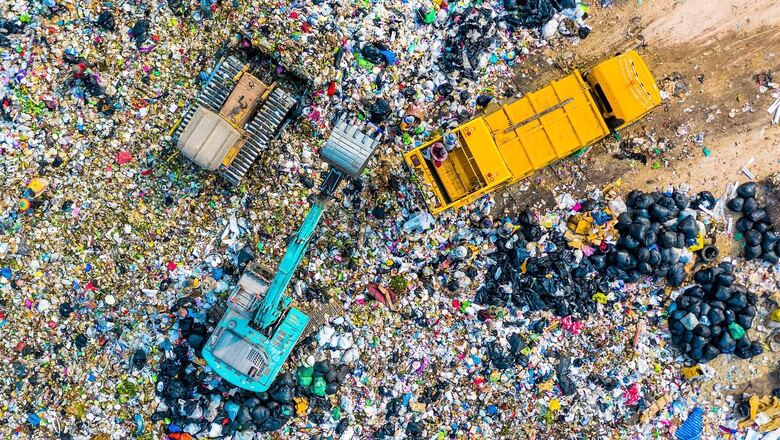
views
The world is warming up because of fossil fuel emissions caused by humans. Extreme weather events linked to climate change, including heatwaves, floods and forest fires, are intensifying. The last year was the warmest on record, and governments worldwide agree that urgent collective action is needed. Hence in the run-up to COP26, developing countries like India are dedicatedly working towards tackling climate change.
Energy and waste are two of India’s biggest challenge. India is gearing to adopt newer technology to convert solid waste into clean and green energy that would help in immediate, rapid and large-scale reduction in greenhouse emissions. It would help tackle waste while generating energy.
Waste generation, in particular, is an acute problem due to lack of waste management and processing facilities. We generate organic and inorganic waste, most of which finally find its way into land and water bodies without proper treatment, causing pollution and affecting individual health as well as environment. The situation in India is indeed alarming—the country produces 62 million tonnes of waste annually, of which an estimated 20-25 per cent is treated.
However, problems caused by solid waste can be significantly mitigated through the adoption of environment-friendly, waste-to-energy technologies that allow treatment and processing of waste after their disposal. Such waste-to-energy technology generates clean, reliable energy, thus reducing dependence on fossil fuels—fossil fuel emissions are a contributor to global warming.
ALSO READ | As World Gets Ready for Glasgow, Get Used to Feeling the Earth Move under Your Feet
Benefits to the Energy Economy
Energy is the driving force behind every economy. Presently, more than 80 per cent of global energy requirements are met by fossil fuels, including coal, oil and natural gas, and their availability is limited. Oil and gas, as per some estimates, will get exhausted in the next 50 years while coal may take a 100 years, if one goes by current consumption patterns.
India depends on oil and gas imports to meet an estimated 75 per cent of its consumption demand and is third largest importer of oil and fourth largest for gas.
The last few years have seen a greater push towards gas-based economy and adoption of cleaner and greener fuel. Under initiatives like Sustainable Alternative towards Affordable Transportation (SATAT), the government aims to promote compressed biogas as an alternative, green transport fuel.
While the climate is favourable for the green sector, there are few waste-to-energy plants in the country despite their many benefits to the environment and the energy economy.
With the right intervention, waste-to-energy can develop into a full-fledged sector that can attract investment. Success in solid waste management can also lead to similar technology being developed and deployed to treat industrial and hazardous waste.
Besides, waste-to-energy opportunities exist not just in India but across the world. Indian companies specialising in such technology can tap other Asian markets too, in due time. The Government of India is providing significant incentives for waste-to-energy projects, in the form of back-ended subsidies.
India’s waste landfills can be its green fuel fields. All they need is technology and some nudge in the right direction.
The author is Founder and Chairman, NexGen Energia Ltd. The views expressed in this article are those of the author and do not represent the stand of this publication.
Read all the Latest News , Breaking News and IPL 2022 Live Updates here.




















Comments
0 comment